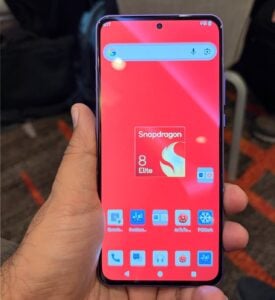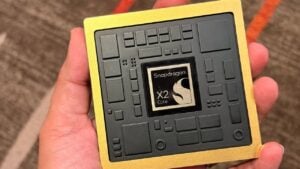During a detailed Q&A session at the Snapdragon Summit, Qualcomm’s top executives and engineers — including VP of AI Vinesh Sukumar, VP of Multimedia Manju Varma, Senior Director of CPU Amandeep Dilwali, GPU Director Judd Heape, and product mastermind Cindy Lei — fielded questions about the Snapdragon 8 Elite Gen 5, its capabilities, and what it means for the next generation of flagship smartphones .
Personalized Agentic AI on Device
One of the standout topics was personalized agentic AI experiences. Qualcomm explained that Snapdragon 8 Elite Gen 5 uses on-device embedding models to continuously learn about user intent and emotional patterns, storing data securely in a vector database.
This data is used to augment prompts for AI agents, creating more personal and contextually aware interactions. Fine-tuning of base models happens when the device is plugged in, optimizing power use. Qualcomm emphasized that personalization is dynamic, with reinforcement learning improving responses over time .
CPU, GPU, and NPU Performance Gains
The new Oryon Gen 3 CPU delivers massive single-threaded performance improvements, thanks to branch prediction refinements, instruction prefetching, and added matrix acceleration instructions — all without compromising power efficiency. Clock speeds now boost up to 4.6 GHz, making this the fastest mobile CPU Qualcomm has ever produced.
On the AI front, Qualcomm highlighted a 37% speed boost and 70% performance-per-watt improvement over the previous generation, as well as industry-leading token rates over 220 tokens/sec, which are critical for running large AI models on-device .
The Adreno GPU continues to support advanced features like hardware ray tracing, mesh shaders, and Unreal Engine 5 optimizations, aiming to deliver console-level graphics on mobile devices. Qualcomm stressed that its GPU design balances raw performance with power efficiency, ensuring longer gaming sessions without overheating or rapid battery drain .
Gaming & AAA Titles on Mobile
When asked about AAA titles like Death Stranding and Assassin’s Creed Mirage running on iPhone, Qualcomm’s team pointed out that Fortnite, Genshin Impact, and other top-tier games already run well on Snapdragon, and more titles are expected soon. The focus is on working with developers and game engines to optimize performance and deliver a seamless flagship gaming experience, rather than just chasing higher hardware specs .
Memory, Bandwidth & Efficiency
Snapdragon 8 Elite Gen 5 supports dual-channel LPDDR5X memory clocked at 5.3GHz, offering high bandwidth for AI and gaming workloads. Qualcomm’s High Performance Memory (HPM) — also known internally as G-Memory — is exposed to developers through Vulkan and GLES extensions, enabling optimizations that cut bandwidth use and improve battery life by up to 10% .
Qualcomm Personal Scribe & Knowledge Graph
Qualcomm introduced Personal Scribe, a new low-power always-on feature that builds a secure on-device knowledge graph. It captures snippets from conversations, browsing history, notifications, music preferences, and location data (with user consent) to enable hyper-personalized AI recommendations. The goal is to make smartphones more proactive and contextually aware — reminding users of important tasks, adapting to their routines, and even optimizing their camera settings for preferred aesthetics .
Camera & Professional Video
Qualcomm’s multimedia team celebrated the inclusion of Advanced Professional Video (APV), which brings pro-level video recording capabilities to mobile devices. While OEM adoption will take time, the first devices with APV are expected in 2026. The company also confirmed native support for TruePic C2PA authentication, allowing OEMs to enable cryptographically verifiable photo and video authenticity by default .
Market Positioning
Cindy Lei clarified that Snapdragon 8 Gen 5 remains the standard premium-tier chipset, while the 8 Elite Gen 5 sits at the very top for users who demand zero compromises. With the premium smartphone market growing and ultra-premium devices (priced over $1,000) accounting for over 40% of that segment, Qualcomm is doubling down on performance, AI, and user experience at the high end .
Snapdragon 8 Elite Gen 5 is more than just a yearly upgrade — it’s Qualcomm’s boldest move yet to bring hybrid AI, desktop-class CPU performance, and console-level gaming to smartphones. With Personal Scribe, HPM memory optimizations, and 220+ tokens/sec AI processing, Qualcomm is positioning its newest flagship SoC as the beating heart of a more intelligent, personalized, and immersive mobile future.























